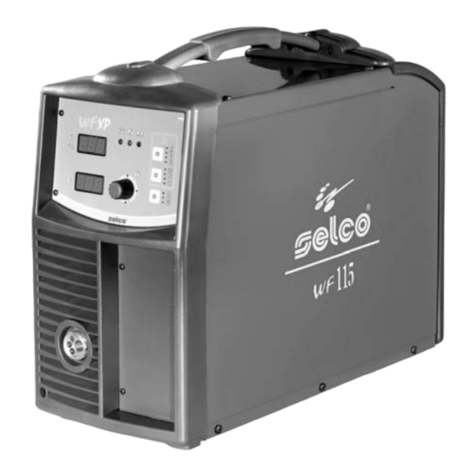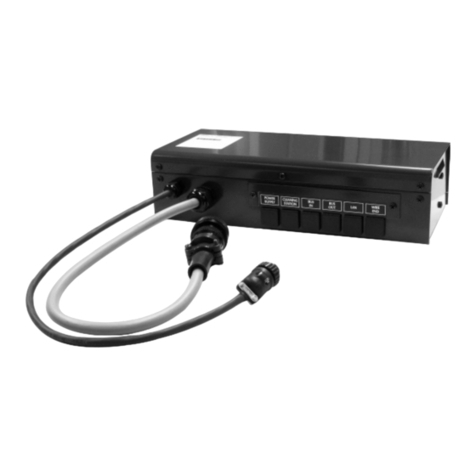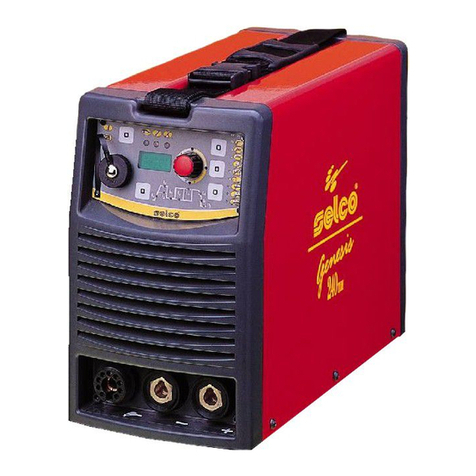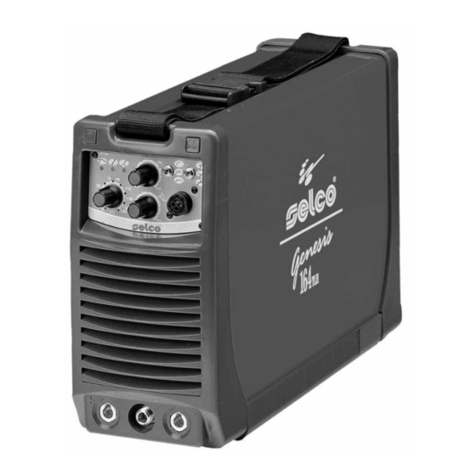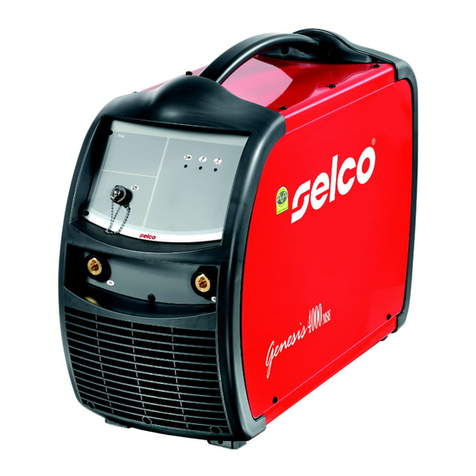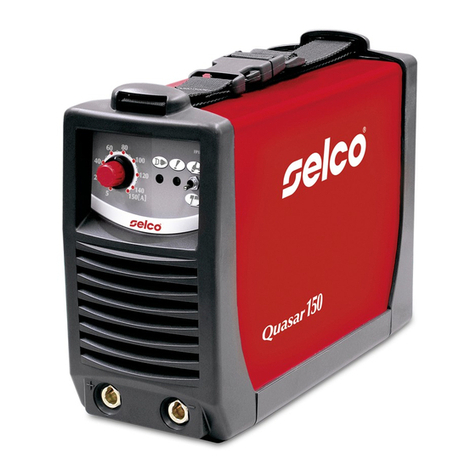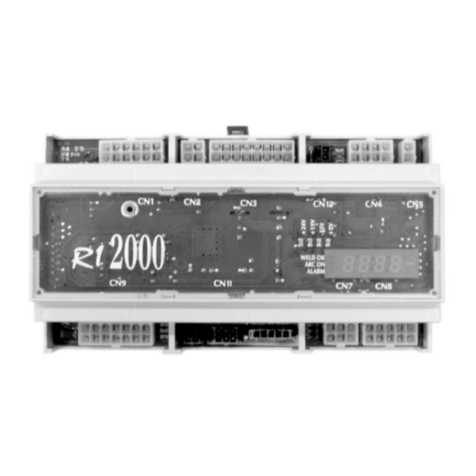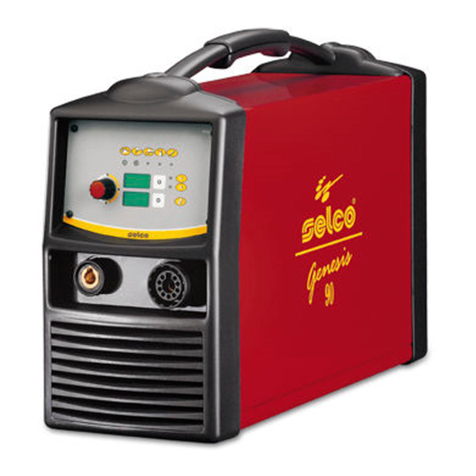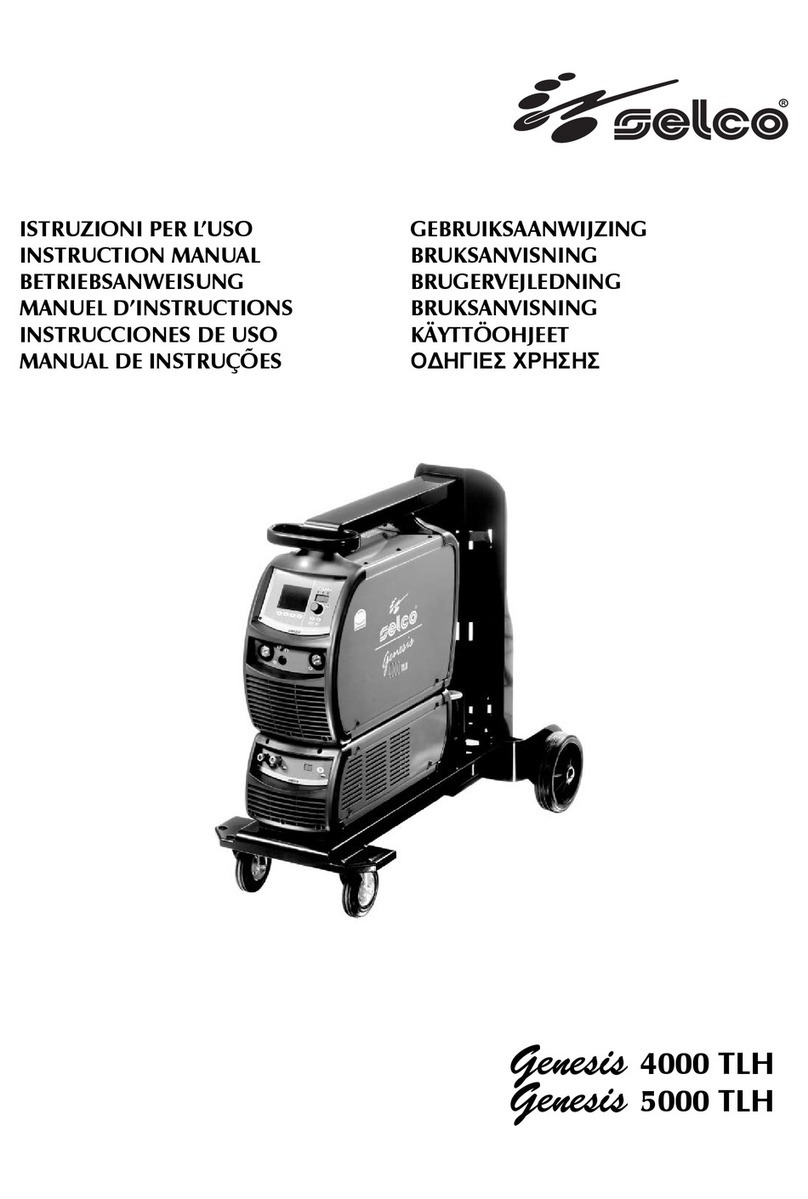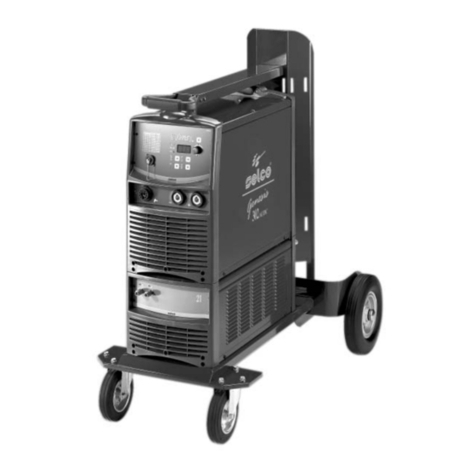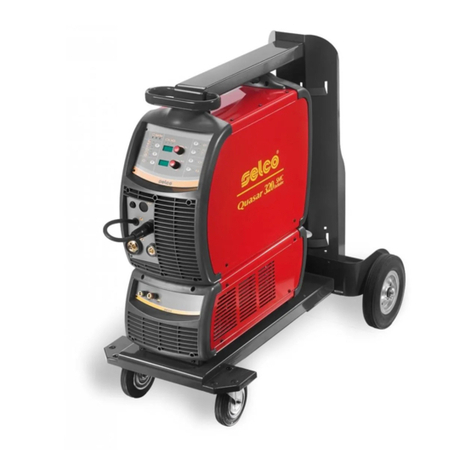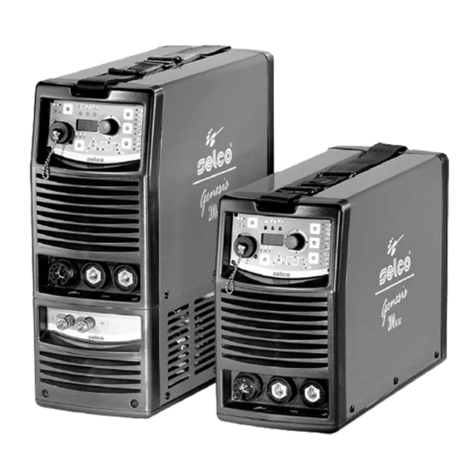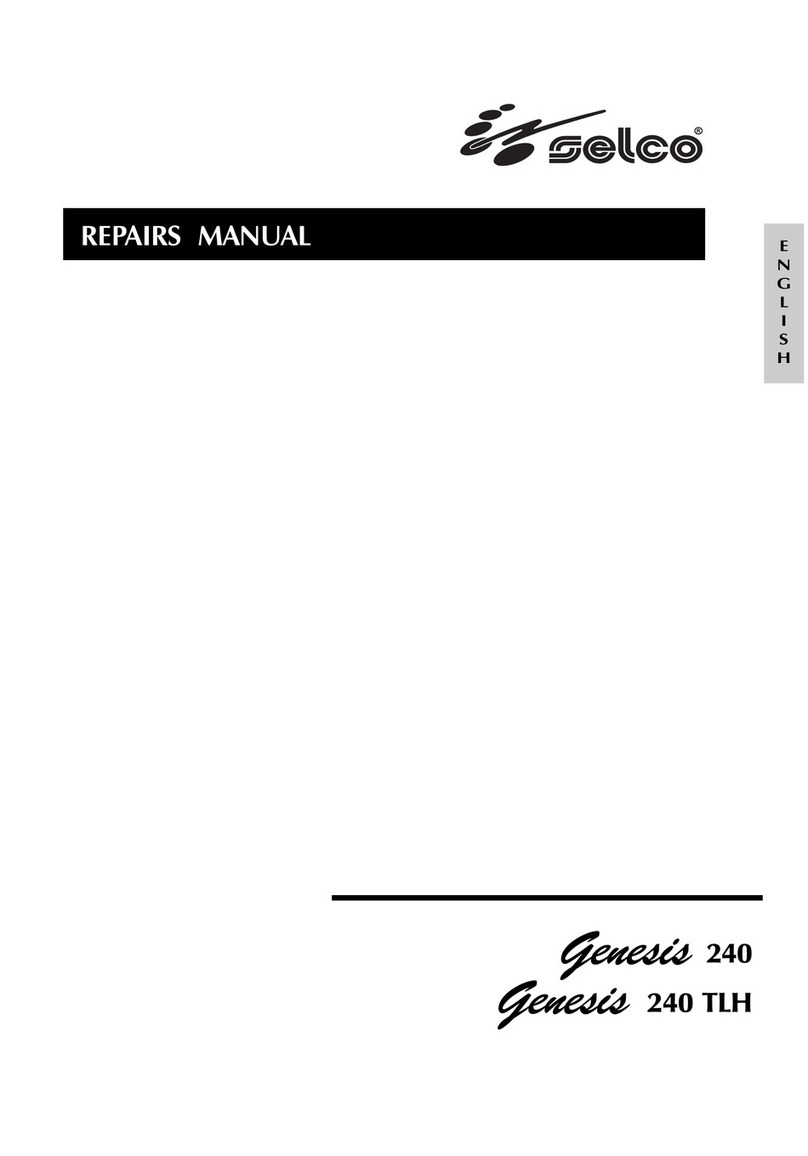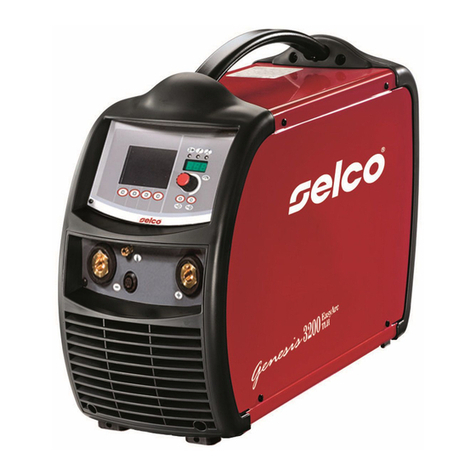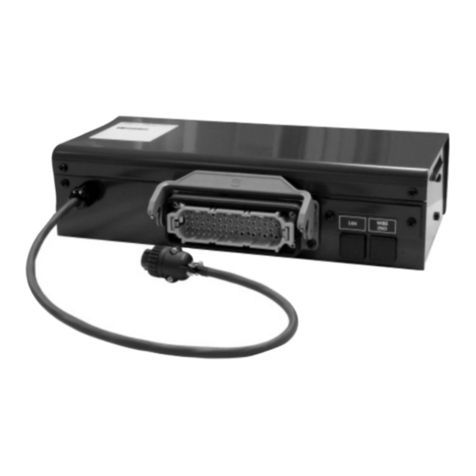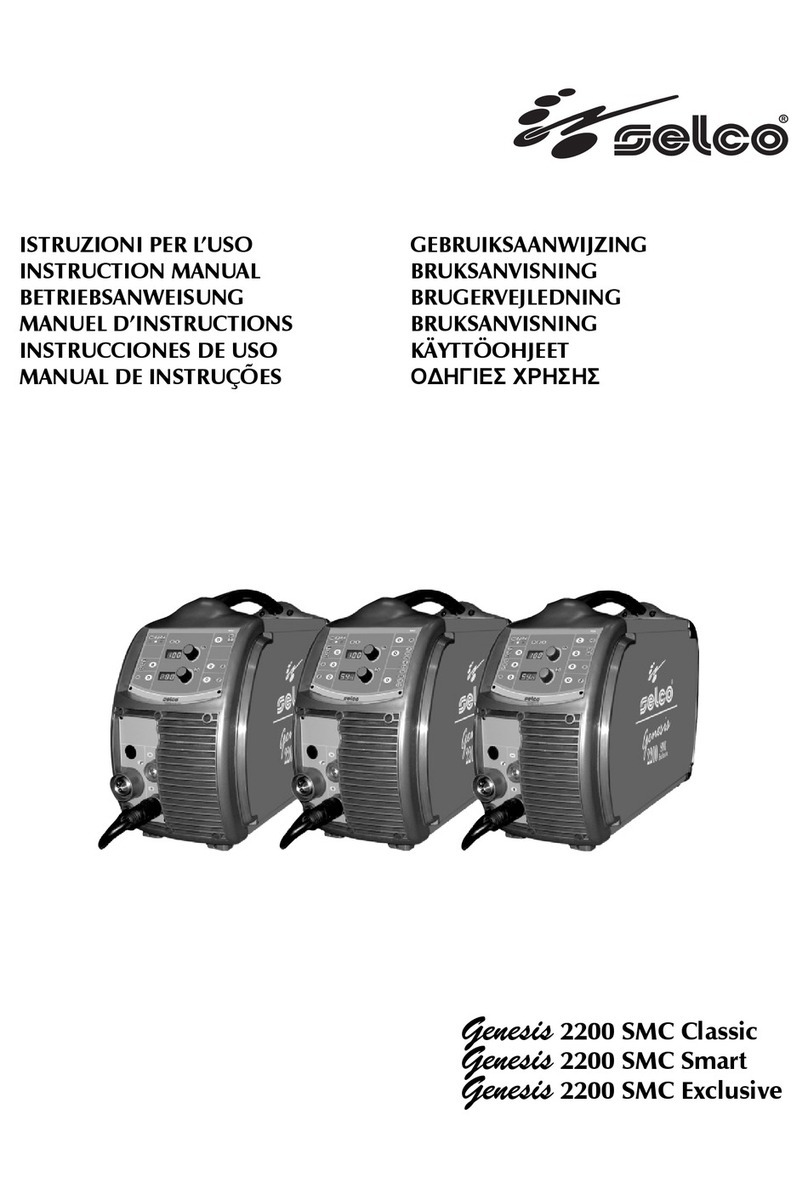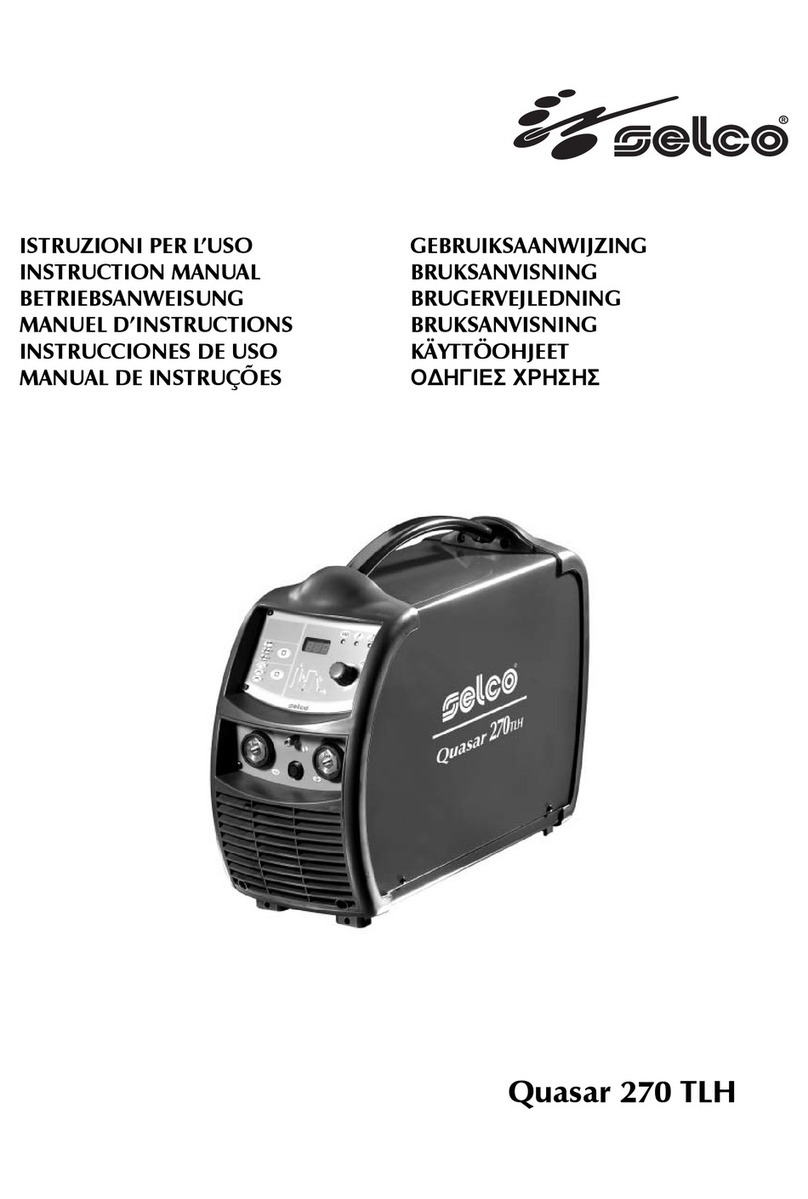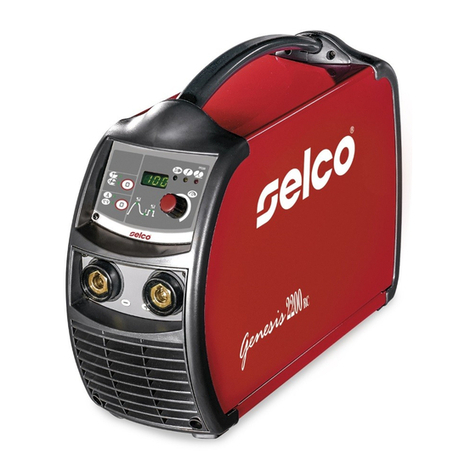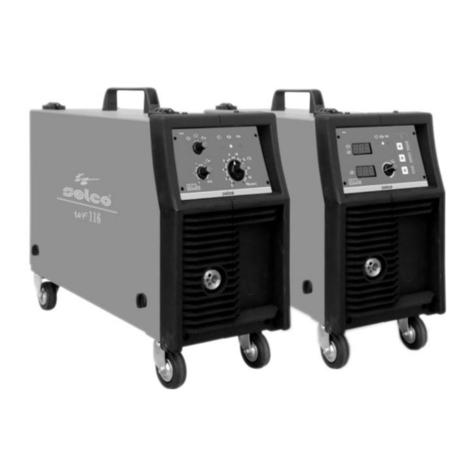5
1 AVVERTENZE
Prima di iniziare qualsiasi operazione siate sicuri di
aver ben letto e compreso questo manuale.
Non apportate modifiche e non eseguite manutenzioni
non descritte. Per ogni dubbio o problema circa l’utiliz-
zo della macchina, anche se qui non descritto, consultare persona-
le qualificato.
Il produttore non si fa carico di danni a persone o cose, occor-
si per incuria nella lettura o nella messa in pratica di quanto
scritto in questo manuale.
1.1 Protezione personale e di terzi
Il processo di saldatura (taglio) è fonte nociva di radiazioni,
rumore, calore ed esalazioni gassose. I portatori di apparecchia-
ture elettroniche vitali (pace-maker) devono consultare il medi-
co prima di avvicinarsi alle operazioni di saldatura ad arco o di
taglio al plasma. In caso di evento dannoso, in assenza di quan-
to sopra, il costruttore non risponderà dei danni patiti.
1.1.1 Protezione personale
- Non utilizzare lenti a contatto!!!
- Provvedere ad un’attrezzatura di pronto soccorso.
- Non sottovalutare scottature o ferite.
- Indossare indumenti di protezione per proteggere la pelle dai
raggi dell’arco e dalle scintille o dal metallo incandescente, ed
un casco oppure un berretto da saldatore.
- Utilizzare maschere con protezioni laterali per il viso e filtro di
protezione idoneo (almeno NR10 o maggiore) per gli occhi.
- Utilizzare cuffie antirumore se il processo di saldatura (taglio)
diviene fonte di rumorosità pericolosa.
- Indossare sempre occhiali di sicurezza con schermi laterali
specialmente nell’operazione manuale o meccanica di rimo-
zione delle scorie di saldatura (taglio).
- Interrompere immediatamente le operazioni di saldatura
(taglio) se si avverte la sensazione di scossa elettrica.
- Non toccare contemporaneamente due torce o due pinze
portaelettrodo.
1.1.2 Protezione di terzi
- Sistemare una parete divisoria ignifuga per proteggere la zona
di saldatura (taglio) da raggi, scintille e scorie incandescenti.
- Avvertire le eventuali terze persone di non fissare con lo
sguardo la saldatura (taglio) e di proteggersi dai raggi dell’ar-
co o del metallo incandescente.
- Se il livello di rumorosità supera i limiti di legge, delimitare la
zona di lavoro ed accertarsi che le persone che vi accedono
siano protette con cuffie o auricolari.
1.2 Protezione da fumi e gas
Fumi, gas e polveri prodotti dal processo di saldatura (taglio)
possono risultare dannosi alla salute.
- Non usare ossigeno per la ventilazione.
- Prevedere una ventilazione adeguata, naturale o forzata, nella
zona di lavoro.
- Nel caso di saldature (tagli) in ambienti angusti è consigliata la
sorveglianza dell’operatore da parte di un collega situato
esternamente.
- Posizionare le bombole di gas in spazi aperti o con un buon
ricircolo d’aria.
- Non eseguire operazioni di saldatura (taglio) nei pressi di luo-
ghi di sgrassaggio o verniciatura.
1.3 Prevenzione incendio/scoppio
Il processo di saldatura (taglio) può essere causa di incendio e/o
scoppio.
- Sgomberare dalla zona di lavoro e circostante i materiali o gli
oggetti infiammabili o combustibili.
- Predisporre nelle vicinanze della zona di lavoro un’ attrezza-
tura o un dispositivo antincendio.
- Non eseguire operazioni di saldatura o taglio su recipienti o
tubi chiusi.
- Nel caso si siano aperti, svuotati e puliti accuratamente i reci-
pienti o tubi in questione, l’operazione di saldatura (taglio)
dovrà essere fatta comunque con molta cautela.
- Non saldare (tagliare) in atmosfera contenente polveri, gas o
vapori esplosivi.
- Non eseguire saldature (tagli) sopra o in prossimità di reci-
pienti in pressione.
- Non utilizzare tale apparecchiatura per scongelare tubi.
1.4 Compatibilità elettromagnetica (EMC)
Questo apparecchio è costruito in conformità alle indicazioni
contenute nella norma armonizzata EN60974-10 a cui si riman-
da l’utilizzatore di questa apparecchiatura.
- Installare ed utilizzare l’impianto seguendo le indicazioni di
questo manuale.
- Questo apparecchio deve essere usato solo a scopo profes-
sionale in un ambiente industriale. Si deve considerare che vi
possono essere potenziali difficoltà nell’assicurare la compati-
bilità elettromagnetica in un ambiente diverso da quello indu-
striale.
1.4.1 Installazione, uso e valutazione dell’area
- L’utilizzatore deve essere un esperto del settore ed in quanto
tale è responsabile dell’installazione e dell’uso dell’apparec-
chio secondo le indicazioni del costruttore. Qualora vengano
rilevati dei disturbi elettromagnetici, spetta all’utilizzatore del-
l’apparecchio risolvere la situazione avvalendosi dell’assisten-
za tecnica del costruttore.
- In tutti i casi i disturbi elettromagnetici devono essere ridotti
fino al punto in cui non costituiscono più un fastidio.
- Prima di installare questo apparecchio, l’utilizzatore deve
valutare i potenziali problemi elettromagnetici che si potreb-
bero verificare nell’area circostante e in particolare la salute
delle persone circostanti, per esempio: utilizzatori di pace-
maker e di apparecchi acustici.
1.4.2 Metodi di riduzione delle emissioni
ALIMENTAZIONE DI RETE
- L’impianto deve essere collegato all’alimentazione di rete
secondo le istruzioni del costruttore.
In caso di interferenza potrebbe essere necessario prendere
ulteriori precauzioni quali il filtraggio dell’alimentazione di rete.
Si deve inoltre considerare la possibilità di schermare il cavo
d’alimentazione.
CAVI DI SALDATURA E TAGLIO
I cavi devono essere tenuti più corti possibile e devono essere
posizionati vicini e scorrere su o vicino il livello del suolo.
COLLEGAMENTO EQUIPOTENZIALE
Il collegamento a massa di tutti i componenti metallici nell’ im-
pianto di saldatura (taglio) e nelle sue vicinanze deve essere
preso in considerazione.
Tuttavia, i componenti metallici collegati al pezzo in lavorazio-
ne andranno ad aumentare il rischio per l’operatore di subire
uno choc toccando questi componenti metallici e l’elettrodo
contemporaneamente.
L’operatore deve perciò essere isolato da tutti questi com-
ponenti metallici collegati a massa.
Rispettare le normative nazionali riguardanti il collegamento
equipotenziale.

